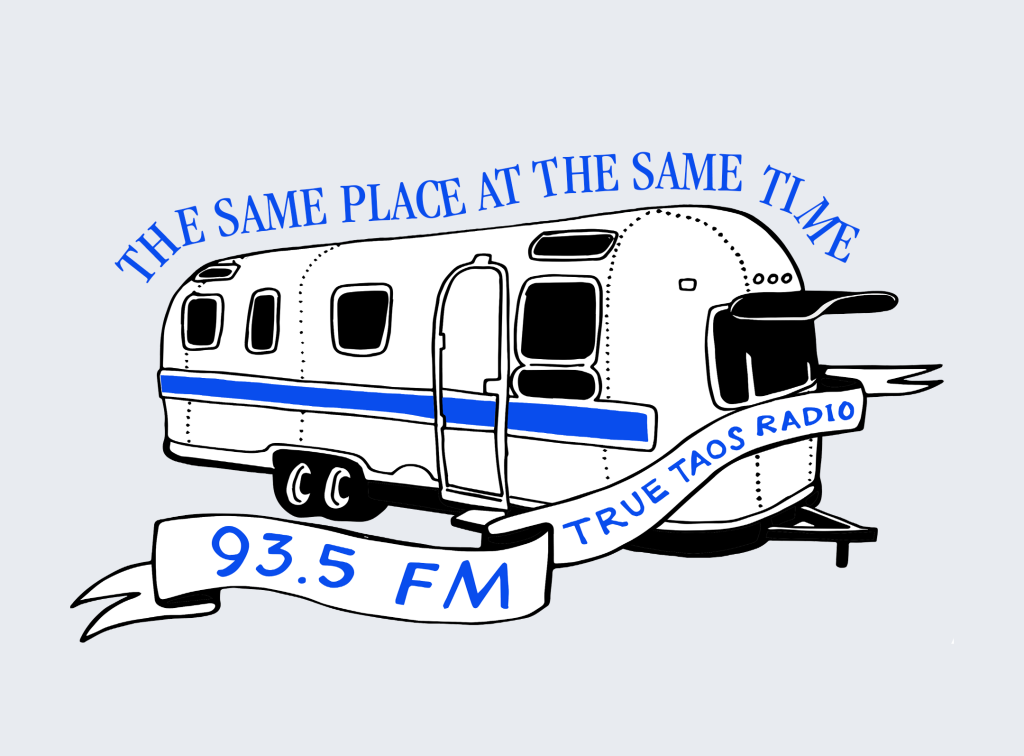Nestled in the high mountains
The Little Blue Eye of Faith
The Deep Turquoise Lake of Life
Blue Lake, my church,
Guarded by Mother Earth
Surrounded by Life
Rippled by the Wind
It’s life-giving water flows
Yet, within its depths, mysteries lie
Those which man will never know
James F. Cordova, Taos Pueblo
It is hard to believe that 50 years have passed since the official repatriation of the Blue Lake and surrounding natural resources to Taos Pueblo. Yet, the passage of time is immeasurable in comparison to the significance of the legislation that culminated in Taos Pueblo’s 64-year long struggle to secure their religious freedom. A freedom guaranteed by the First Amendment of the Constitution of the United States, but which was appropriated in 1906 in the name of production of natural resources under the guise of preservation. Our forefathers premised their opposition and based their efforts for repatriation on the fact that Blue Lake and the surrounding land is a holy place likened to Jerusalem, the Vatican, Santuario de Chimayo, Mecca, and other places of religious significance and vitality. Generations of Taos Pueblo people make the annual trek to Blue Lake to pray and seek solace. These are all places where people make treks and our Blue Lake is the same. Blue Lake is central to our existence and vital to our way of life. It is the place of our emergence and the place of our return at the conclusion of our life. Our annual trek is to honor our predecessors and enliven our spirits with prayer. This is our way and it has been this way since time immemorial.
The Lakota scholar, Vine Deloria, Jr. accords power and place in the Indian world as, “Basic experiential dimensions that, taken together, provided a sufficient means of making sense of the world. Power perhaps better defined as spiritual power or life force.” Deloria, Jr. goes on to explain that, “Familiarity with the personality of objects and entities of the natural world enabled Indians to discern immediately where each living being had its proper place and what kinds of experiences that place allowed, encouraged and suggested. And knowing places enabled people to relate to the living entities inhabiting it.” This is best exemplified by the annual trek made by Taos Pueblo people to Blue Lake via the “Path of Life,” an approximately 20-mile mountain trail that is traversed both day and night. Without intimate knowledge of this trail, the shrines and springs along the way, this trek would be very difficult, but also a strenuous trying experience. Yet, because our elders have imbued the spiritual power of this journey, sang the songs, shown us the dances, and led the way to Blue Lake, all pilgrims are familiarized at a young age of this trail and its significance to the spiritual power and life force that is ingrained in our DNA and reiterate this information to our children and grandchildren as it has always been done since time immemorial.
The fearlessness and perseverance of our forefathers has also been ingrained in younger generations of Taos Pueblo people. The stories of their struggles and travels are passed down through generations as an epic battle with insurmountable odds just as their forefathers before them when casting the Spaniards from our lands in the great Pueblo Revolt [of 1680]. It was not only a story akin to Sampson and Goliath, but a tumultuous episode of American history as can be written. Taos Pueblo enrollment in 1906 was 500 people strong and this was all those spiritual and traditional government leaders needed to advance their fight for the return of their land and its sacred Blue Lake. This was the epitome of the “power of the people,” against a government that had a history of total disregard and complete disrespect for an indigenous people whose land was there for the taking.
The United States Government gave no forewarning that they were going to appropriate the land and made no pretense that once theirs, they had total control of its development as a recreational area. They knew that possession was 9/10s of the law and their Congress was unwilling to succumb to any influences to return the land to Taos Pueblo. This struggle, this clash of cultures, continued for 64 years. It was such because the U. S. Government’s actions were based on the prevailing movement to preserve the last remaining vestiges of wilderness from development and annihilation. The early 20th century movement was led by Gifford Pinchot and other environmentalists who supported the notion of preserves by nationalizing vast tracts of land such as Yellowstone and Yosemite for citizens to enjoy and revel in these last vestiges of primitive areas in the United States.
Taos Pueblo, as do other indigenous peoples, had always respected and utilized the land for subsistence and revered it for the symbiotic relationship that was fostered over millennia of use and harmonious interaction. Whether President Theodore Roosevelt was vested in the movement is questionable, but because he was an ardent sportsman, he saw that setting aside these lands would guarantee wild game for the future. The newly established U. S. Forest Service proceeded immediately to build cabins, construct roads, and stock the lakes with intrusive fish that prayed upon and decimated the native cutthroat trout. The U. S. F. S. issued permits to Taos Pueblo from a limited number of days so the latter could journey to their sacred Blue Lake and pray for the wellbeing of all peoples. The stipulations on the permits were that Taos Pueblo officials had to request use of their land two weeks before the actual ceremonial period.
Despite Pueblo protests, the Blue Lake area was made accessible to the general public even during the ceremonial period of Taos Pueblo. Senators Clinton P. Anderson and Lee Metcalf were the main opponents of bills introduced to the Senate. This continued for several decades until a new strategy was employed. This strategy included an ardent and expensive public opinion and relations war made possible with support from many non-Indian sympathizers and compatriots from influential non-governmental organizations, ecumenical organizations and churches, Indian activists and organizations, and members of Congress.
The tide began to turn and in 1969, on the first day of the Ninety-first Congress, Representative James A. Haley, Chairman of the Subcommittee on Indian Affairs, introduced the Blue Lake Bill (H. B. 471), which granted trust title to 48,000 acres to Taos Pueblo, which included Blue Lake. President Nixon and Vice President Agnew were finally convinced that supporting the return of this land would be advantageous for their domestic policies, especially for American Indian policies. President Nixon signed H. R. 471 on December 15, 1970, which became Public Law 91-550. This law became the basis of American Indian policy that ensued including the Native American Religious Freedom Act, the Indian Self-Determination and Education Assistance Act, Indian Civil Rights Act, Indian Education Act, Indian Health Care Act, American Indian Religious Freedom Act, Indian Child Welfare Act, Archaeological Resources Protection Act, and many other laws promoting American Indian self-sufficiency and cultural preservation. Important legal, political, and economic national organizations were also established at this time including: the National Indian Education Association, the Native American Rights Fund, the National Tribal Chairman’s Association, and the Council of Energy Resource Tribes. These national Indian organizations represented interests at various levels of government and contributed to a growing awareness of the shared interests and common problems of all Native Americans. The National Congress of American Indians and other non-governmental organizations recognized the resilience and tenacity of Taos Pueblo and the effects of the Return of Blue Lake as hallmark legislation for all American Indians.
Although Native Americans continue to face severe problems related to employment, income, and education, they have demonstrated that they will not abandon their Indian identity and culture, nor will they be treated as dependent wards [nations] of the federal government.
We have unending gratitude and tremendous pride and respect for our elders and forefathers who sacrificed their lives for the return of these lands and our sacred Blue Lake to Taos Pueblo. It is to honor their spirit that we trek every year to “The Little Blue Eye of Faith,” to use Mr. Cordova’s words, through which we honor and pray for “Its life-giving water,” the animals and plants that provide our sustenance, and the “depth and mystery” of our belief in an Almighty Creator and the beautiful land and place that was provided for us to nurture and protect for future generations of Taos Pueblo people.
—Vernon G. Lujan, Curator



